Finding Myself and How to Give and Heal in Asia
Written by: Caitlin Legate
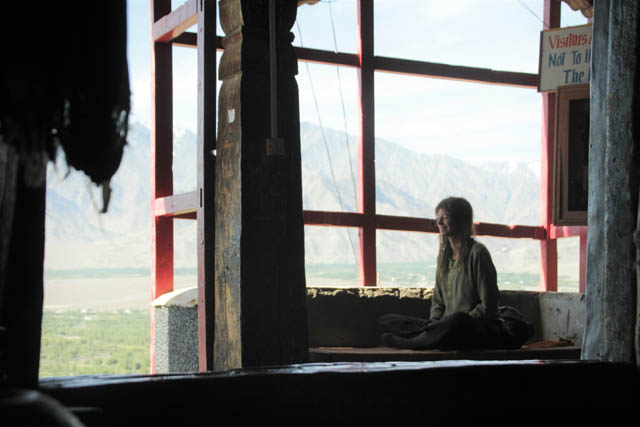
Cate Legate sitting and smiling at Shey Monastery in Ladakh, India, after being fed small bowls filled with Thenthuk, Tibetan noodle soup, by loving monks.
Photos by: Pierre Akerib, Joseph Brown, Joe Fender, Cate Legate, Magnus Lieber, Mikhail Safiullin, Bram de Vries
(Editor’s note: Cate Legate here shares the story of the 18 months she spent recently in pilgrimage and retreat in Asia, and how that led her to return to Seattle to share what she learned and saw.)
I left society, and the stress that comes with it. I lived as a monk or a nun, I walked with my bag, and I lived in the truth of my being.
It never felt right here, something was always off. I look around Seattle when I am driving to see people in their cars, foreheads resting against their steering wheel, tired. I see people in coffee shops, biting their nails, hastily scrolling on their laptops, fingers gripping their coffee.
As people walk, I see clenching fists that unfold to nervous movement, disgruntled faces, wandering minds full of thought of what needs to be done.
Something doesn’t feel right.
As a psych major, I was often analyzing my surroundings.
I started a little self-led study around Seattle. This study consisted of asking multiple people if they had stress in their life, and not once did I find a person who wasn’t exploding with an answer.
Hmmm. Something isn’t right.
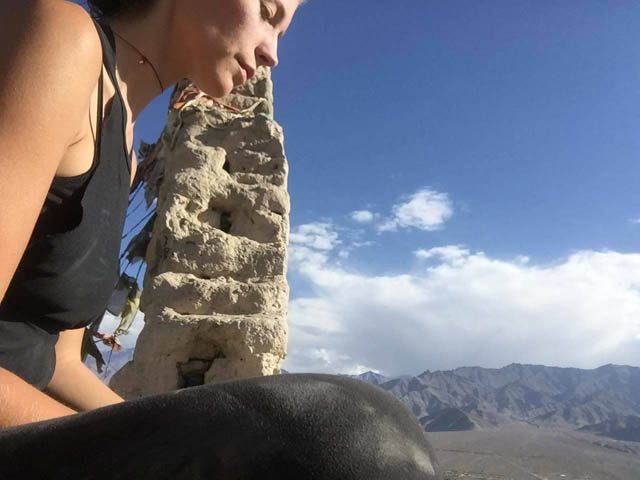
Could more of us be questioning our circumstances? Could there be a better way of living?
I look around to see a huge and pained society, one full of stress, one full of distraction and confusion, one that is only halfway questioning: Is something wrong here?
Fast forward to 2017, to find me holding my one-way ticket to Asia, a backpack on my back, and the insatiable drive for more answers. I first arrive in Thailand, a land of softness in the air, abundant fruit, and smiles and open hands.
I feel my body and mind relax, and sink into the ease of the place. I begin to explore myself and the land, the people, the culture.
Thailand was a wondrous start to my unfolding, as the Buddhist culture of smiling monks and loving people gave me the encouragement I needed to go deeper into who I was, and, what the meaning of all of this is. I was living in nature, meeting people from around the world in hostels, and learning of natural ways to be a contributing human being on this planet, thanks to beautifully free-minded people. With a one-way ticket and my boots and my bag, I was not turning back.
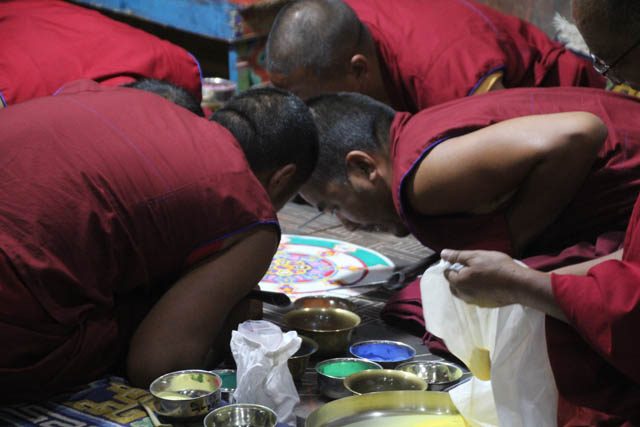
I then discovered a place called Tushita, in Dharamsala, India. This place offered me a course on dharma (Buddhist philosophy). I was introduced to Mahayana Buddhism and Tibetan culture.
Here I learned that as long as we remained attached to our “selves” (or idea of selves), our needs, our standards, and our belongings, we will engage in some sort of suffering.
As things are subject to change, that too means that our selves are subject to change, just as our belongings are subject to leave us or break or become no longer valuable.
I learned that not only do we attach to an idea of how our day should be, or how our life should be going, only to be let down when life intervenes, we attach to an idea of our self. When someone threatens our imagined self-image, which we cling to, we become hurt, irritated or defensive.
I found that I was creating my own suffering.
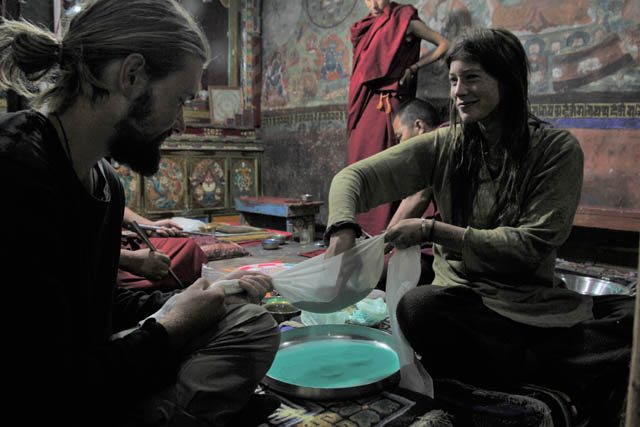
Shortly after the course at Tushita I did a vipassana course, which is 100 hours of silent meditation in 10 days. This changed my life forever.
I saw a truth of my being, the love and compassion inside of me, the way my mind worked, and how to just ‘be.’ I let go of my sadness, my anger, my worry.
There was insight, and joy; I felt that I had faced my fear of death, and therefore faced my fear of lack of control.
As I saw how people with return tickets scuttled around trying to squeeze their itineraries to make the perfect trip, while others without tickets eased about, I realized that this is comparable to awareness of our own death. I realized it is possible to let go of the fearful control and to be more present for life’s beauty.
After my vipassana retreat I felt so strongly about trying to live in the moment that I went and acquired my own tent, crafted my own knife, gave away 80 percent of my belongings, turned off my debit card, and began as a new and present human of this world. Not only did I become strong, find countless beauty inside, and live in the present moment, I saw that there is a whole new way to even live.
For more than a year I learned the beauty of letting go. I did not use money for more than six months, I happily slept in the homes of others, on holey bamboo floors with chickens scuttling underneath. I ate the most delicious and love-filled food from others, others who had so little but wanted to share so much, and I was given the most love on earth, without asking.
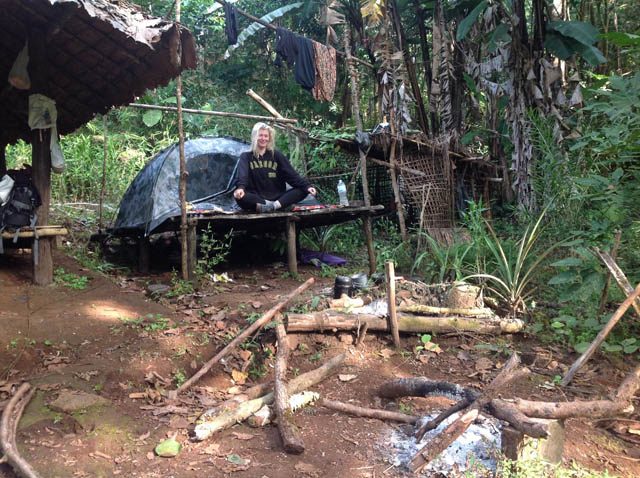
I cannot tell you how many tears of gratitude I have shed for the vastly different people I met along the way. From the high-up, untouched villages in Ladakh, from the Tibetan culture of Dharamasala, from the Hindu people in Nepal, from the monks in Burma, from the Sikh temples with open cots, from the Muslim men with big warm smiles, from the farmers with their offerings of vegetables… from all things that I encountered, I learned that life can be different.
After 14 months abroad I left my practice, I left the non-use of money, I left self-renunciation and the attempt of being fully present, and I decided to come “home.”
Being back I hope share my story to influence, to create hope, and to bring awareness.
I hope people can begin learning of dharma, simply as a philosophy and learning of mindfulness, and learning to slow down and stop for a minute. To breathe. To rest. To accept. To let go.
Upon my return this January, I found that my new aim here is to alleviate the suffering caused by our own minds. I hope to spread the peace that I have found from meditation, as well as teach mindfulness to all ages.
I have moved back to Seattle and partnered with a startup called AVI Body Nature Spirit, which is a beautiful movement that intends to offer better platforms for community to gather and connect in, to gain a broader sense of wholesomeness and unification.
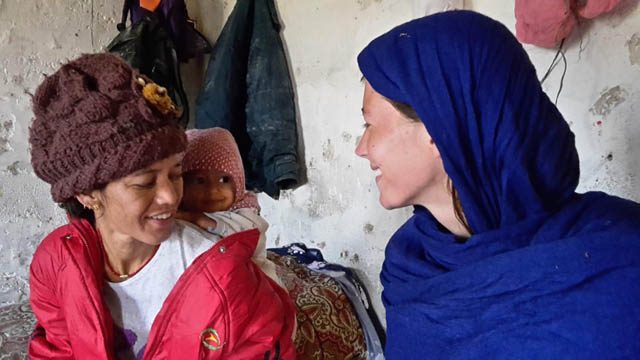
This startup was founded by Joseph Brown, a local Seattleite, and was begun under the presumption that we as people have the ability to create places that hold sacred space and provide significantly more value to the community and society as a whole than your local YMCA, social hub, or coffee shop.
For years, this startup has been constructed to help people optimize and tune into their bodies, heightening their awareness of what nature (in its untouched form) can provide in developing our own sense of spirituality through mindfulness practices.
We want to begin creating accessible spaces that encourage community, to feel wholesome, grounded and connected, while also offering more accessible technologies to optimize people’s health, physically and mentally.
These sorts of spaces can offer programs on mindfulness, meditation, dharma talks, centering, yoga, connections with nature, and other spiritually healthy vices that are open to all kinds of people. It will also encourage and offer healthy eating, lifestyle and nutrition. My next steps of creating a livelihood will be helping this startup launch and flourish.
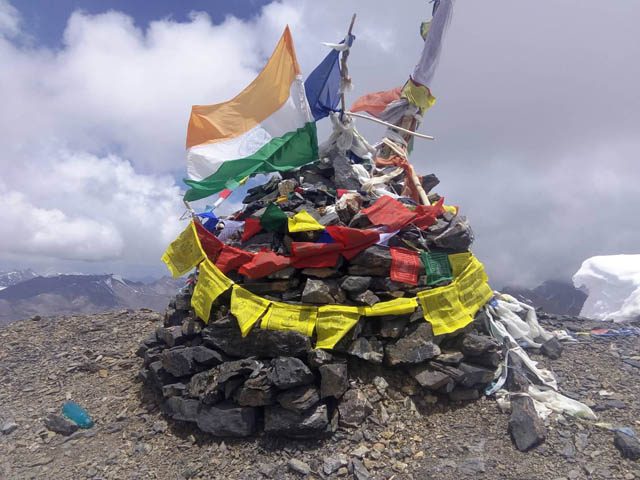
My role will be to find ways to spread information to the community that will allow people to grasp dharma, not as a dogma, but as a practice that will allow for a far more peaceful mind. Though abroad I had identified with Mahayana and Tibetan Buddhist philosophy, I have learned that all types of Buddhist philosophy can be learned by all as ways to have more peaceful states of mind. The way that I teach does not require one to be Buddhist, but requires one to be open to learning about their own self, their own suffering, and their own new practices that could begin to relieve their suffering.
For the few months that I have been back I have begun mindfulness teacher training courses, as well as surrounding myself with dharma talks and meditations. The beautiful Seattle Insight Meditation Society has hosted speakers that have moved me and encouraged me, and the wonderful Shambhala meditation group has gifted me ease with their insightful courses.
Places like these have encouraged me to start leading meditation groups in the city of Normandy Park south of Seattle, to begin networking with fellow dharma workers, and to begin learning about how to give dharma talks.
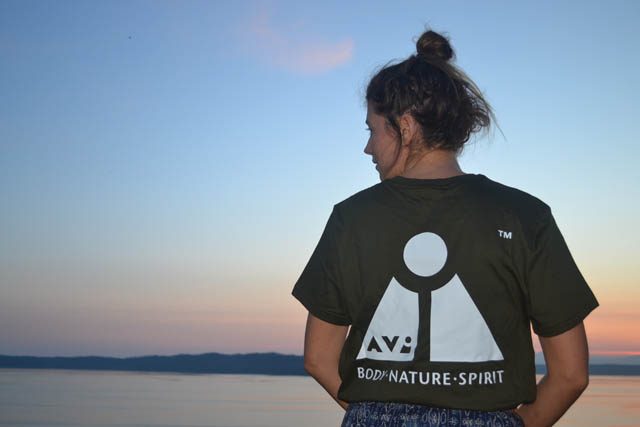
I want to spread healing information such as this to those in need. I want to spread Buddhist dharma not necessarily as religion, but as whatever it needs to be to whomever needs it. I want to share how to understand the workings of one’s own mind.
Before I ever packed my bag and took off for a land unknown, I had no idea about the ways in which my mind and well-being could benefit. I am so lucky and thankful to have found it.
I cannot wait to learn more, I cannot wait to partner with others, and I cannot wait to share.
Caitlin Legate was born in Seattle in 1991. As a child she attended St. Francis of Assisi Catholic school, then Highline High School and finally earned two degrees in psychology from Central Washington University. She is now attending master classes on mindfulness coaching and life coaching.
Legate practices vipassana and other meditation techniques. She is currently helping with the launch of AVI Body Nature Spirit™, and has been appointed head of the spiritual/meditation branch. She hopes to reach out to those in need, and to network with those trying to spread dharma or mindfulness.
